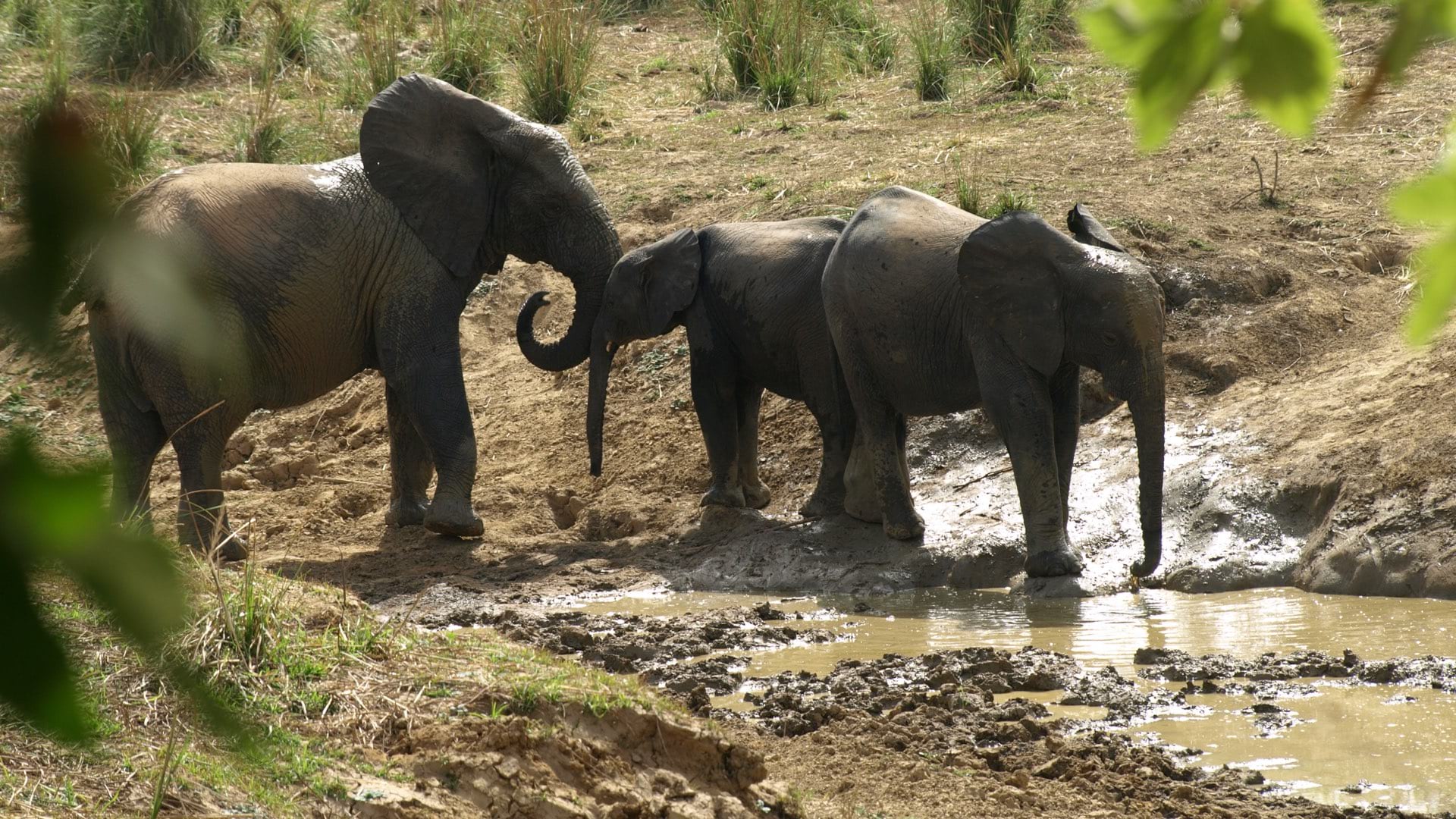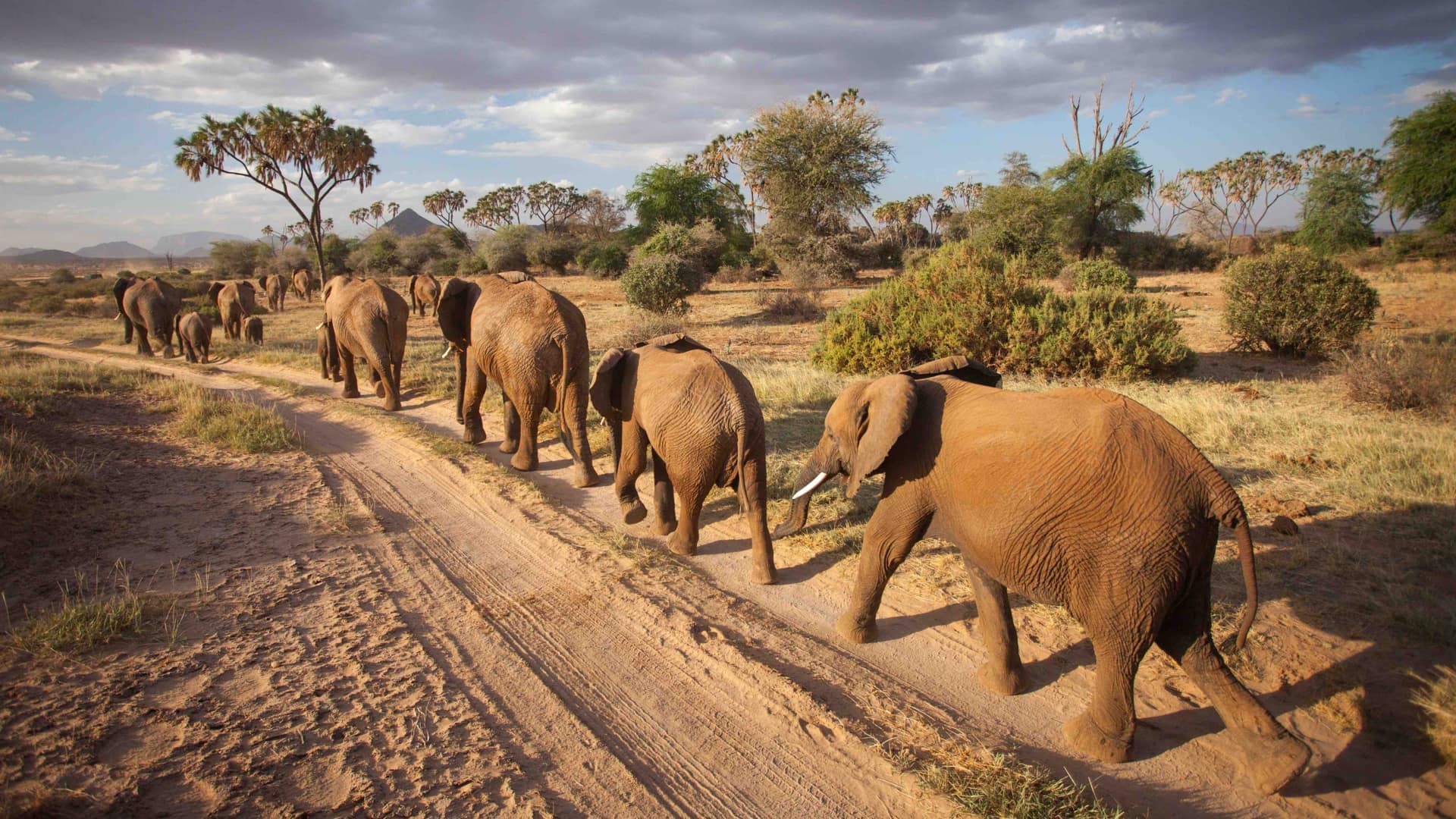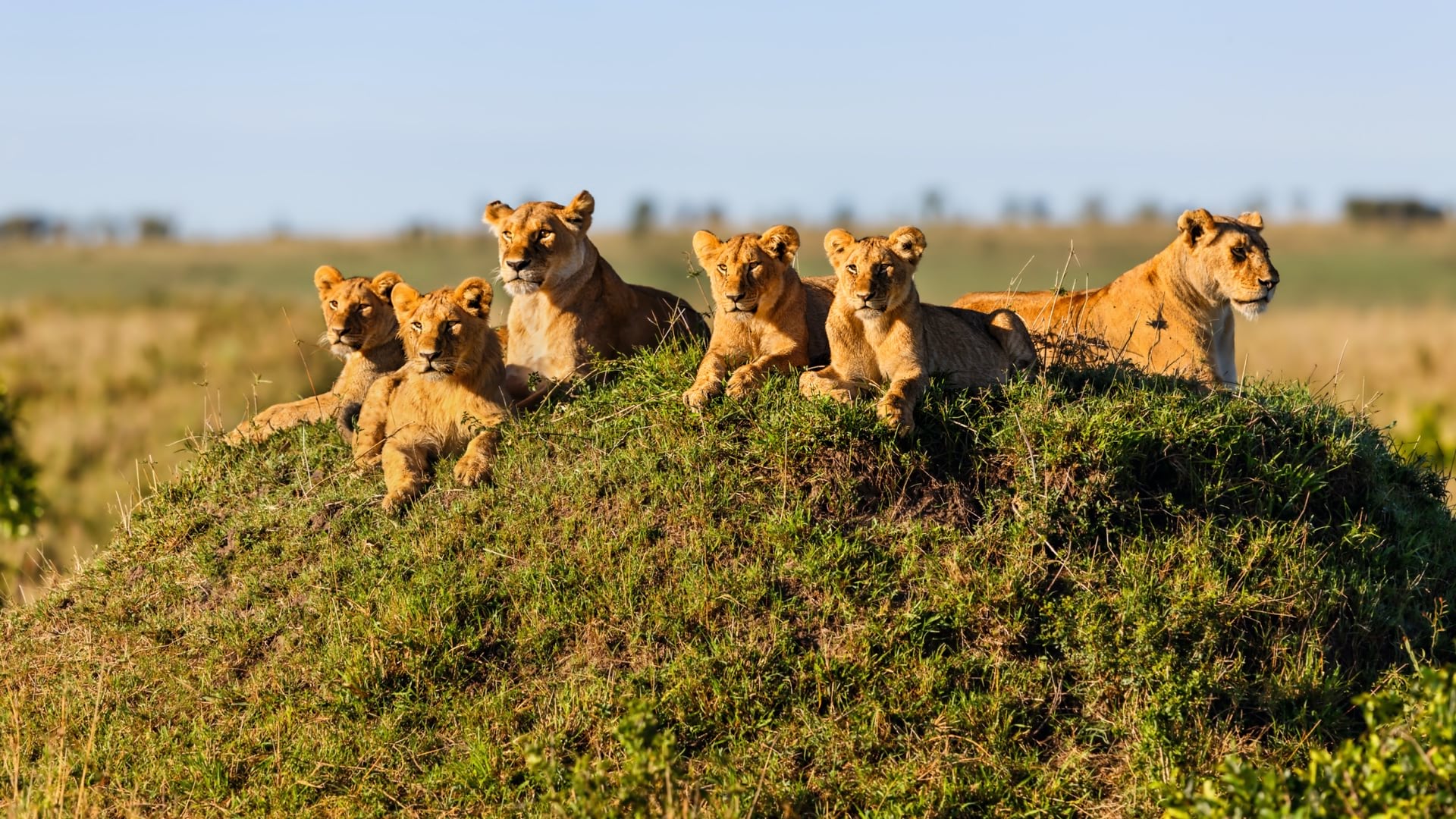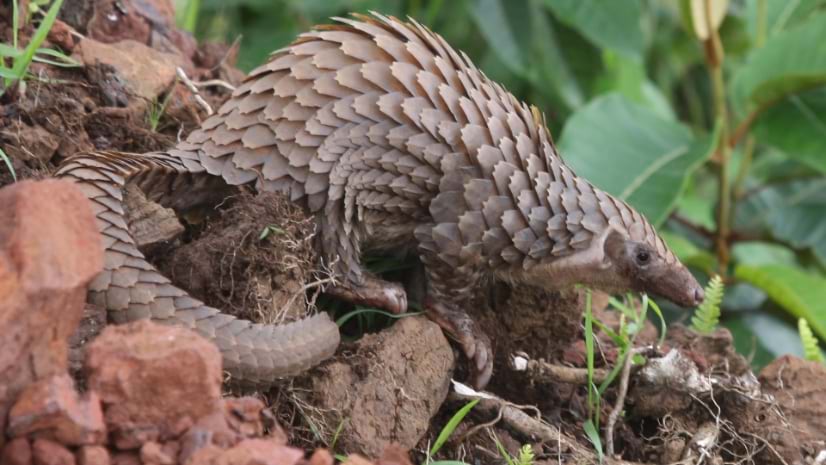
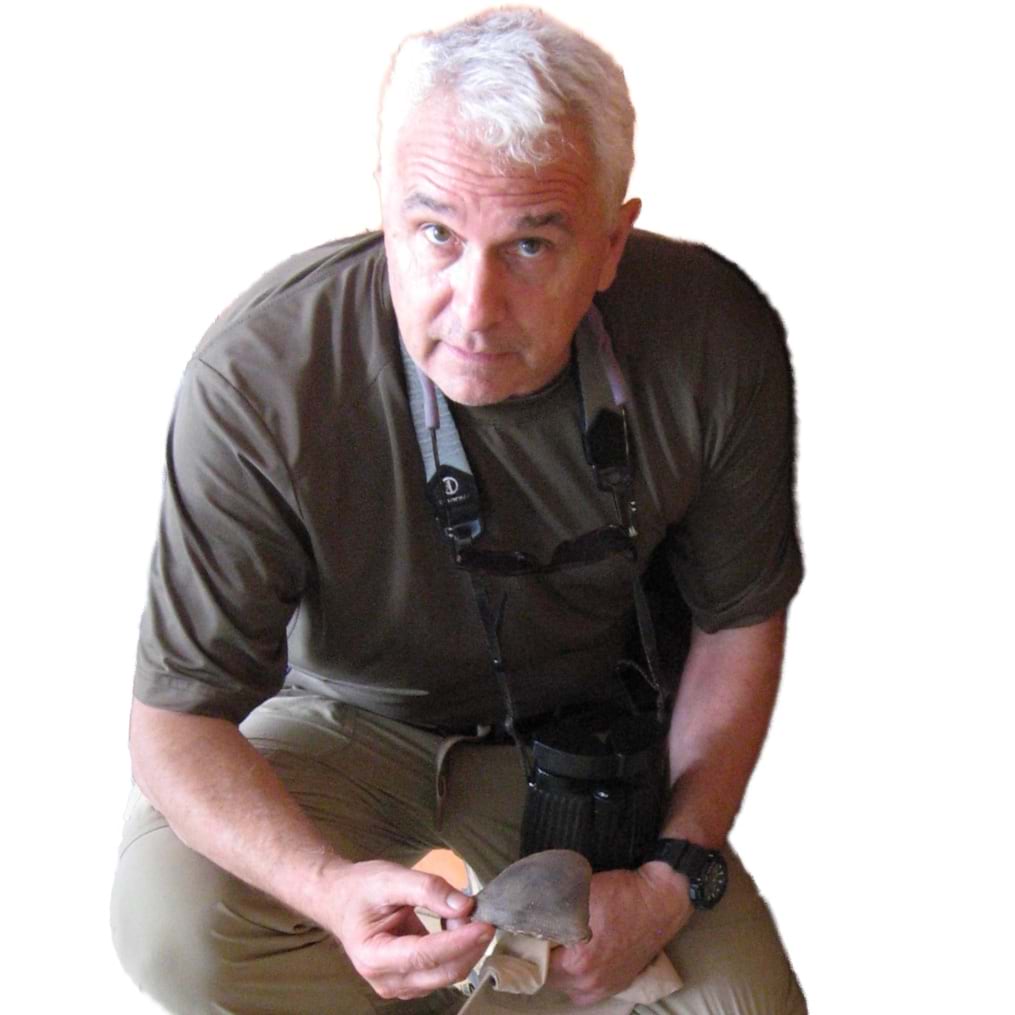
Using our genomic approach, one can remove a single scale from a confiscated shipment in Hong Kong and determine that it came from an animal near Bata, Equatorial Guinea.
February 20, 2024

Pangolins look like a mix of an armadillo, a pinecone, and a baby dinosaur, with a curious tendency to shuffle upright on their two back feet, and hundreds of tiny scales that keep them safe from predators. Except for humans.
Over the past decade, demand for their meat and scales, which are valued as traditional medicine across East Asia, has driven Asian pangolin populations to near extinction. At the same time, poaching of African pangolins has placed all other species of pangolins in danger, and made Africa’s white-bellied pangolin (Phataginus tricuspis) the most trafficked mammal in the world.
In 2019, 14 tons of scales (equal to 36,000 poached pangolins) were confiscated in Singapore. In 2023, a ton of scales were seized in Bangkok, Thailand.
Pinpointing where exactly they are being poached has proven challenging for authorities. Many pangolin scales still end up in East Asia, where demand is highest, but the animals range widely across sub-Saharan Africa. And typical analysis techniques are “not really at a scale that law enforcement can use to map poaching hotspots and figure out where they need to be prioritizing their efforts,” says Jen Tinsman, a forensic scientist at the US Fish and Wildlife Service’s National Fish and Wildlife Forensics Laboratory and a researcher at the UCLA Center for Tropical Research. So Tinsman and a group of colleagues at UCLA and elsewhere gathered genetic data from trafficked pangolin scales to build a new kind of map, one that can identify poaching hotspots within tens of kilometers. The researchers outlined their results in a new paper, published in Science in December.
“We’re getting really fine-scale resolution with where pangolins are coming from in Central Africa,” she says.
Tinsman—who began studying the white-bellied pangolin at the institute—says that even before the surge in poaching, due to their size and behavior, the animals were already hard to study in their habitats, and difficult to tag. And they don’t do well in captivity.
“We have a really good sense of how many tigers are left in the wild, how many elephants are left in the wild, how many rhinos are left in the wild, other big charismatic things that we see in the trade.” But, she says, “we don’t know how many pangolins are left.”
“It will be so sad if a species like that goes extinct before we can even study them in the wild,” she said.
Tracing an international supply chain would depend upon a network of partners from across the globe: over a dozen research organizations and government agencies, including the International Union for Conservation of Nature, US Fish and Wildlife Service, and universities in countries such as China, Gabon, Nigeria, Cameroon, and the Czech Republic.
The project was born out of efforts to track and map pangolin poaching by the Congo Basin Institute, a joint initiative of UCLA and the International Institute of Tropical Agriculture. But the idea to map the origins of seized pangolin scales was inspired partly by similar estimation for trafficked elephant ivory and would depend upon a set of techniques first developed for tracking breeding populations of migratory birds. The genomic approach was developed by the UCLA’s Center for Tropical Research Bird Genoscape Project.
“Let’s say you have a species of bird that you’re seeing population decline in the US, but they winter throughout Central America,” Tinsman said. “Figuring out where in Central America the threatened populations rely on over the winter is really important for their conservation.”

Using our genomic approach, one can remove a single scale from a confiscated shipment in Hong Kong and determine that it came from an animal near Bata, Equatorial Guinea.
Pangolins are also migrating, just not on their own. Previous genetic research on pangolin scales looked at mitochondrial DNA. Plot that on a map, she says, “and you can get, ‘Oh, they’re in West Africa’—so anywhere from Senegal to Ivory Coast maybe.”
Instead, Tinsman and her colleagues (including more than 20 African scientists who are authors on the Science paper) analyzed the animal’s whole genome, and built the first range-wide set of genome sequences for pangolins. Shifting from genetics to genomics, “you can just get so much more data, so much finer resolution,” within 70 kilometers of error, says Tinsman. With that level of error, and enough samples, “you can get a really good sense of where pangolins are being poached and where they’re coming from.”
To connect confiscated scales to their origins on the map, the team would need to gather samples of white-bellied pangolins from near their habitats, before they embarked on trafficking routes. Some pangolin parts would come from recent tissue specimens from natural history collections, but the easiest way was to go to local bushmeat markets, where hunted pangolins were brought for sale.
Scientists in Nigeria, Gabon, and Cameroon—armed with GPS receivers to geotag their samples—would go to local markets, and, to avoid paying and supporting the poaching economy, would ask sellers for a donation. “Normally, they don’t care if you ask for the tongue,” says Tinsman. “They want to eat the meat and then sell the scales.”
The team ultimately procured a total of 551 samples of blood, muscle, and scales from across the pangolins’ habitat, from Senegal and West Africa down to Zambia and Central East Africa. (Some of the samples had been gathered during a years-long disease surveillance project that ended years before the pandemic.) From these, they managed to extract 111 high-quality genome sequences, and by analyzing 96 individual changes to the genome, they identified five distinct population groups that were strongly associated with distinct geographic areas, from Sierra Leone to the Democratic Republic of the Congo.
Next, Tinsman and her colleagues began developing a process to quickly and cheaply sequence a pile of hundreds of scales confiscated at ports and markets and donated by the Hong Kong government. Ultimately the researchers analyzed 643 samples of scales, each tagged with a date between 2012 and 2018, when pangolin trafficking reached a new peak.
Previously, the official seizures database had simply indicated Nigerian origins for pangolins that transited through Nigeria: 95 percent of seized animals have no recorded source other than Nigeria. That includes a seizure in 2018, when seven tons of scales were found in a cargo container in Hong Kong.
The DNA painted a far more detailed—even opposite—picture.
When traced to their true source, only 4.2 percent of pangolins that were shipped from Nigeria during that time period actually originated there. Nigeria is a key hub, but the vast majority of confiscated scales came from two major hotspots: along Cameroon’s southern border with Equatorial Guinea and Gabon, and from western Cameroon, near the border with Nigeria.
When mapped over time, the scales reveal a decade-long shift. In 2012 and 2013, most shipments were dominated by pangolins from West Africa, but over time, the researchers documented a shift in intensity and geography, with poaching expanding into Central Africa, to Cameroon, Gabon, and Equatorial Guinea.
A remarkably large number of pangolins originated in the border areas between those countries, Tinsman said, “where enforcement is really tough because you’re in a multinational situation.”
“It’s shocking,” she adds, “that so many pangolins are coming out of such a small geographic area.”
The DNA contains no clear explanation for the shift, but Tinsman and her colleagues speculate that the trend could reflect a few factors: increased enforcement, declining pangolin populations in West Africa, or traffickers taking advantage of new, more convenient trade routes—or some combination of all three.
They also note a gross underestimate of the full scale of the pangolin industry. “Many shipments are never detected at all,” they write. Those that aren’t caught by law enforcement range from an estimated 400,000 African pangolins per year to 2.7 million.
The testing process to determine the origin of scales that Tinsman and her team built was also crucial, she said. Eventually the team were able to analyze the scales at a cost of about $8 a sample, with results delivered in under a week.
“Getting to that point was a lot of work,” she says, “but that was the goal of the project: to make a quick and simple assay, where you can run 94 samples at a go, so 94 different confiscated scales.”
Researchers hope the map—and being able to quickly make new maps—help anti-trafficking authorities focus their attention on traffickers.
More generally, maps like these could help capture the public’s attention, by instantly illustrating the impact that demand has on faraway—and increasingly-connected—ecosystems. “You need a map to understand the whole story,” Tinsman said.
Consider the typical pangolin supply chain. Hunters in countries in Central Africa sell an animal to a middleman for around $10, “which is a lot of money for them, but nothing for the middleman.” Locals will eat or sell the meat, but the scales are dried and gathered into overseas shipments, often in shipping containers, at ports, mostly in Nigeria. They arrive in a port in Southeast Asia, like Hong Kong, Singapore, Malaysia, or Vietnam, before being distributed to markets across the region.
“That’s so many words to just tell you what a map could show you in an instant,” Tinsman said. “So understanding the branching nature of this supply chain, you need a map for that.”
And at multiple, well, scales. In addition to a map of poached pangolins across Central Africa, “you’ve got to have a big international map for how they get amassed and shipped, and then the ways that they actually take to market and the end consumer in Southeast Asia, you need a map.”
Tinsman points to one key landmark, and a symbol of the shift. The founder of the Congo Basin Institute, Thomas Smith, did his dissertation research in the 1980s studying African finches at a field site in Cameroon—a beautiful, lush, intact forest. Today all of that is gone: now it’s the Kribi Deepwater Port.
“That port is driving a lot of economic development into the forest for timber harvest,” she says. “And what happens when you build roads into the forest and you send people into the forest to get wood is that they harvest the local wildlife as well, and they consume wild meat. And it’s really easy to just pop a dead pangolin on a truck with some timber and send it to the port as well and make some money that way.”
“So all of this increasing economic activity that’s really good for Cameroon is actually really bad for Cameroon’s biodiversity.”
Tinsman can see the toll registered in her locally based colleagues, the ones who are “actually caring about pangolins and getting samples and jumping through all of the permitting hoops to send stuff to the West.”
“I feel very personally attached to pangolins, but it’s got to be a whole other level to work on them, to spend months trying to track one down to get a radio collar on it, and then to have them just completely bulldoze their habitat. That’s got to be hard.”
The demand for African pangolins is a relatively recent phenomenon, largely fueled by the growth of a Chinese middle class in search of traditional medicines. Growing economic ties between China and Africa have likely accelerated the trade. And the scales, “There’s evidence they don’t do anything more than placebo. It’s like having chicken noodle soup when you’re sick.”
Regulations haven’t helped much. In 2016, after years of diplomatic wrangling, pangolins were finally listed in Appendix I of CITES, the Convention on International Trade in Endangered Species, extending to them the highest level of protection under an international agreement to regulate the wildlife trade.
“Up until 2017, they were legal to trade. You had to have a permit, but it was legal to export African pangolins to anywhere you wanted.”
And yet, despite the ban, approximately 600,000 pangolins were illegally traded between 2016 and 2019 alone.
“We didn’t really see the intended effect, which would be a reduction in the trade of pangolin,” Tinsman said. “It really ramped up to 2019, which was sort of the peak year.”
On the ground, in the places where they’re being killed, the shift in poaching over less than two decades, from Asia to Africa, she says, “is this really, really abrupt change in the ecosystem and we have so little data to project what we think is going to happen. It’s concerning.”
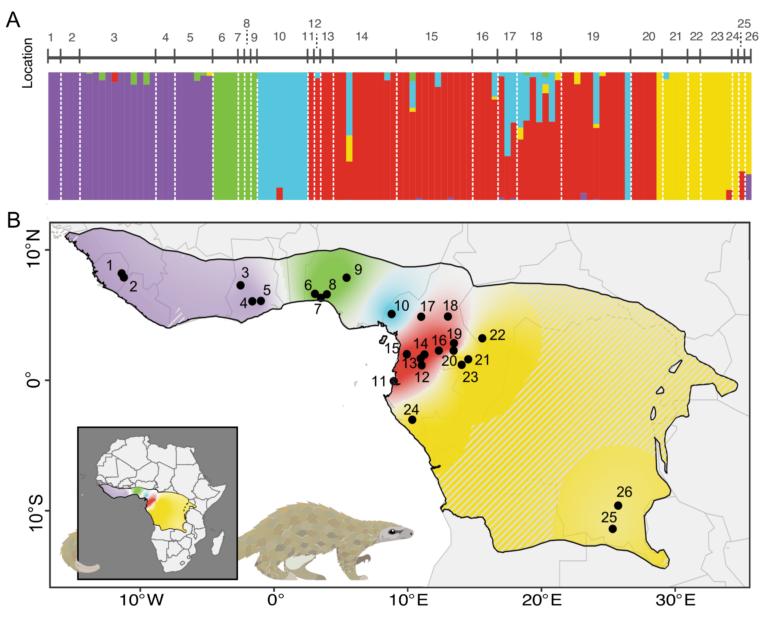
Tinsman emphasizes that wildlife trafficking doesn’t just hurt critical animals and the surrounding ecosystem: it feeds a rise in violence, political instability, and multinational criminal organizations. Trafficking animals is the fourth-most lucrative kind of trafficking after smuggling humans, guns, and drugs.
“It is these major international criminal syndicates that are involved in this because they already know how to ship stuff illegally,” she says. “So why not add on timber? Why not add on pangolins? Why not add on elephants?”
“It’s not just about the pangolins. These organizations are driving political instability and violence in habitat countries for pangolins.”
Battling wildlife trafficking could also reduce the risk of zoonotic diseases. Pangolins in seized shipments have been found to carry novel severe acute respiratory syndrome (SARS)–related coronaviruses. In the ongoing search for the origins of COVID-19, many analysts implicated a poached pangolin.
“Nobody wants another pandemic,” Tinsman said, “and even if it wasn’t pangolins this time, it could be the next.”
Given the difficulties of studying pangolins in the wild, “genomic-geospatial” analysis is giving conservationists a new weapon, and at a moment of urgency.
“We know that white-bellied pangolins eat ants, we know that they’re nocturnal, but getting more detailed ecological data for them is a pretty herculean effort,” she says. “So we don’t know what taking them out of the landscape this aggressively and this rapidly is going to do.”
For now, researchers are digging up more clues in trafficked pangolins. In September, another team of researchers said they had studied pangolin scales confiscated in Hong Kong in 2012 and 2013 and in Yunnan, China, in 2015 and 2019, and found that some, from the line of Asian pangolins, belong to a previously unrecognized ninth species, one that doesn’t map to any known genetic population using mitochondrial DNA.
Tinsman is thrilled with the paper that revealed this new line, which was authored by researchers at Kadoorie Farm and Botanic Garden in Hong Kong, another partner in the mapping project. “But we don’t know where the mystery pangolins occur in the wild,” she says.
Next, she hopes that further research, and new techniques like eDNA, will offer more answers to these questions. And she looks forward to getting the genomic assays into the hands of the people closest to the pangolins.
“Honestly, the biggest problem that we faced throughout the project and that we’re still working on, is figuring out how to get the technology”—and the adequate supplies of chemical reagents—“implemented in Central Africa where pangolin are being harvested.”
That would save precious time and resources. Currently, the samples are sent to California for genotyping, but because pangolins are protected by CITES, Tinsman and her team had to apply for a permit to receive those shipments. The process took 17 months. Export permits were also needed from each country, as well as research permits in Cameroon. “That was such a massive time sink.”
“I think just knowing that we can get this resolution and that we can start mapping where poaching is happening in almost real-time . . . If somebody in Cameroon confiscates a scale, if they were able to do this in their own lab and they send it, it would take less than a week.”
In 2022, a team from UCLA went to Cameroon to lead what Tinsman hopes will be the first of many local workshops bringing together scientists, conservationists, and people from government and non-government organizations, in order to share their findings, and demo the limitations and promises of their geospatial-genomics approach.
One of the project’s most encouraging outcomes, Tinsman said, is that researchers and conservationistst are part of a growing global community of pangolin lovers and experts, including networks like the volunteer-run IUCN Pangolin Specialist Group. She’s stayed in touch with some of her collaborators through a “very active” WhatsApp group.
“I’m on the West Coast so my phone is always blowing up at 2 a.m. with texts from somebody in India who’s just gotten a pangolin baby into their rehab, and they’re getting veterinarian advice from somebody in South Africa,” she said with glee.
There and elsewhere, Tinsman sees the glimmers of a budding global movement to conserve pangolins, who are long overdue for more respect, or even just recognition.
“Half the time when I tell people I work on pangolins, they think I’ve said penguins because nobody’s heard of them,” Tinsman said. “And then when I explain them, they’re like, “Are you sure you don’t want to work on penguins? Because pangolins are so weird.”
The new research, she hopes, will help keep them and all that weirdness on the map.
“The genomics are cool,” Tinsman said, “but what’s really exciting about this is the momentum that pangolins have. People are finally starting to pay attention.”
Learn how GIS helps find balance between humans and wildlife, to protect natural and cultural resources.
